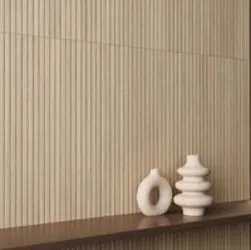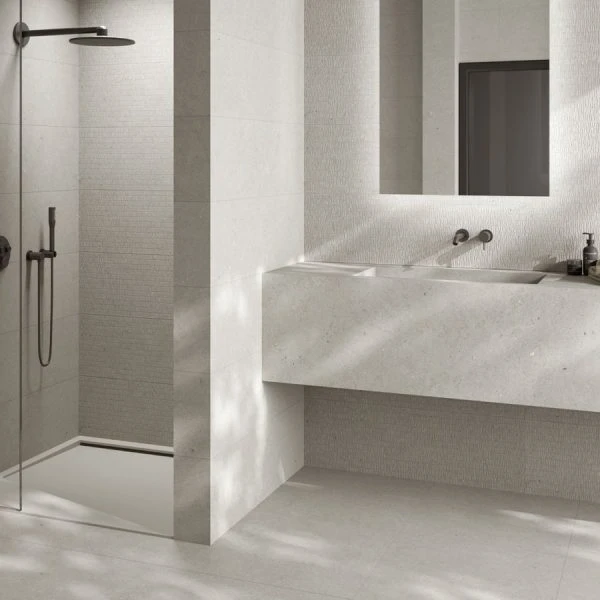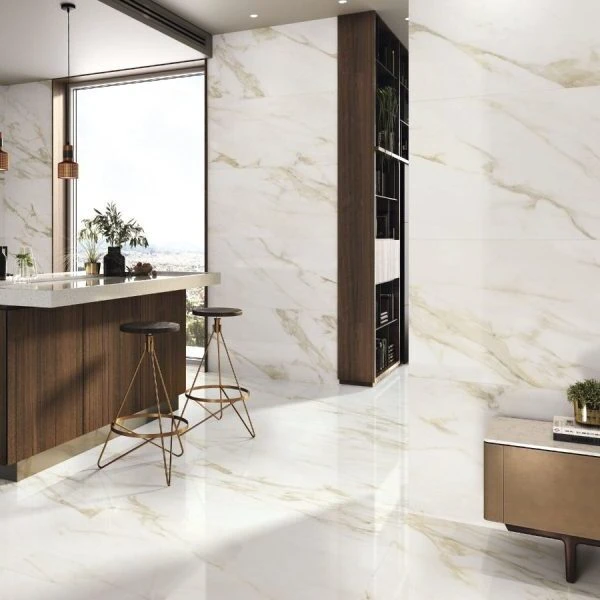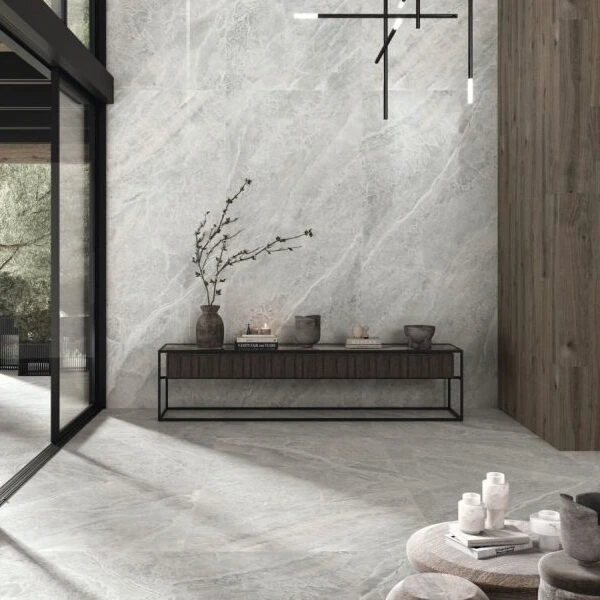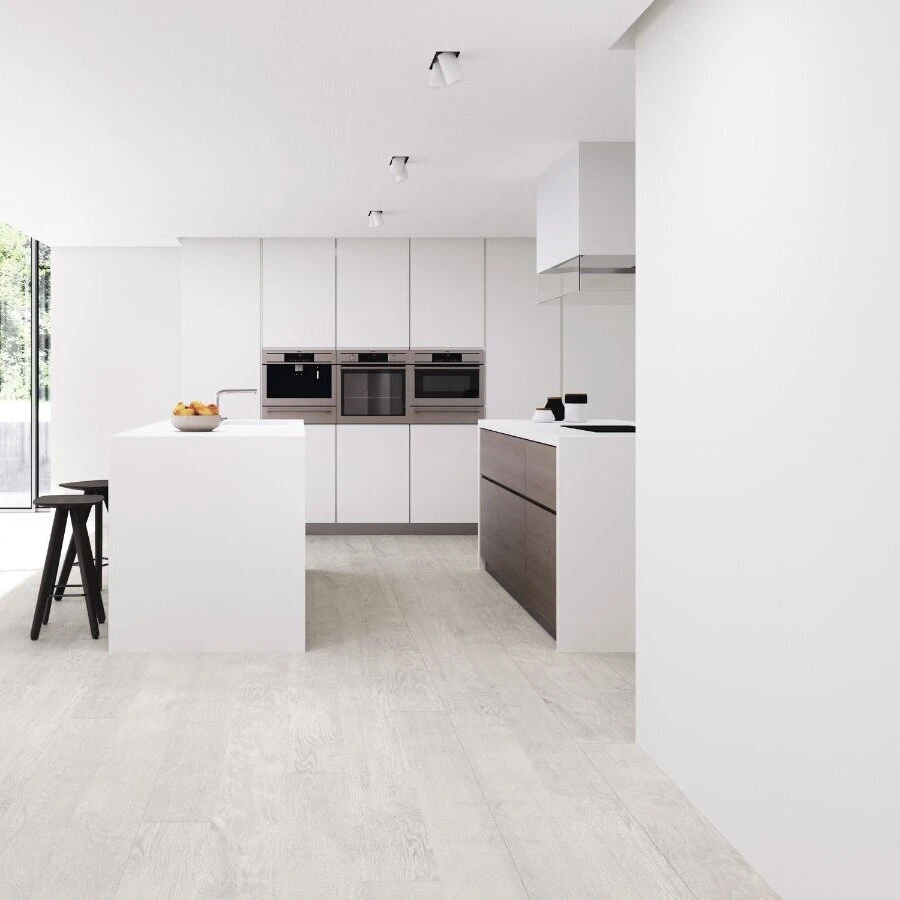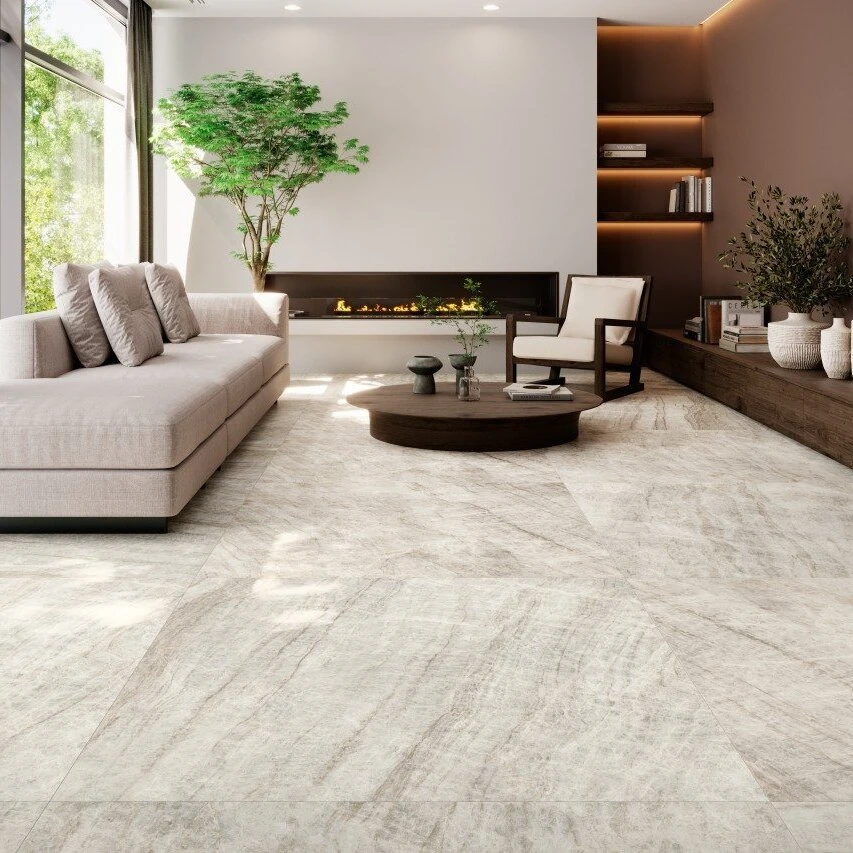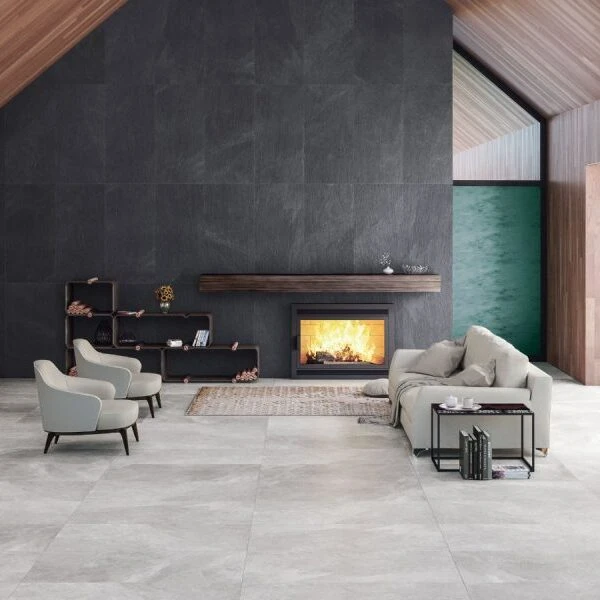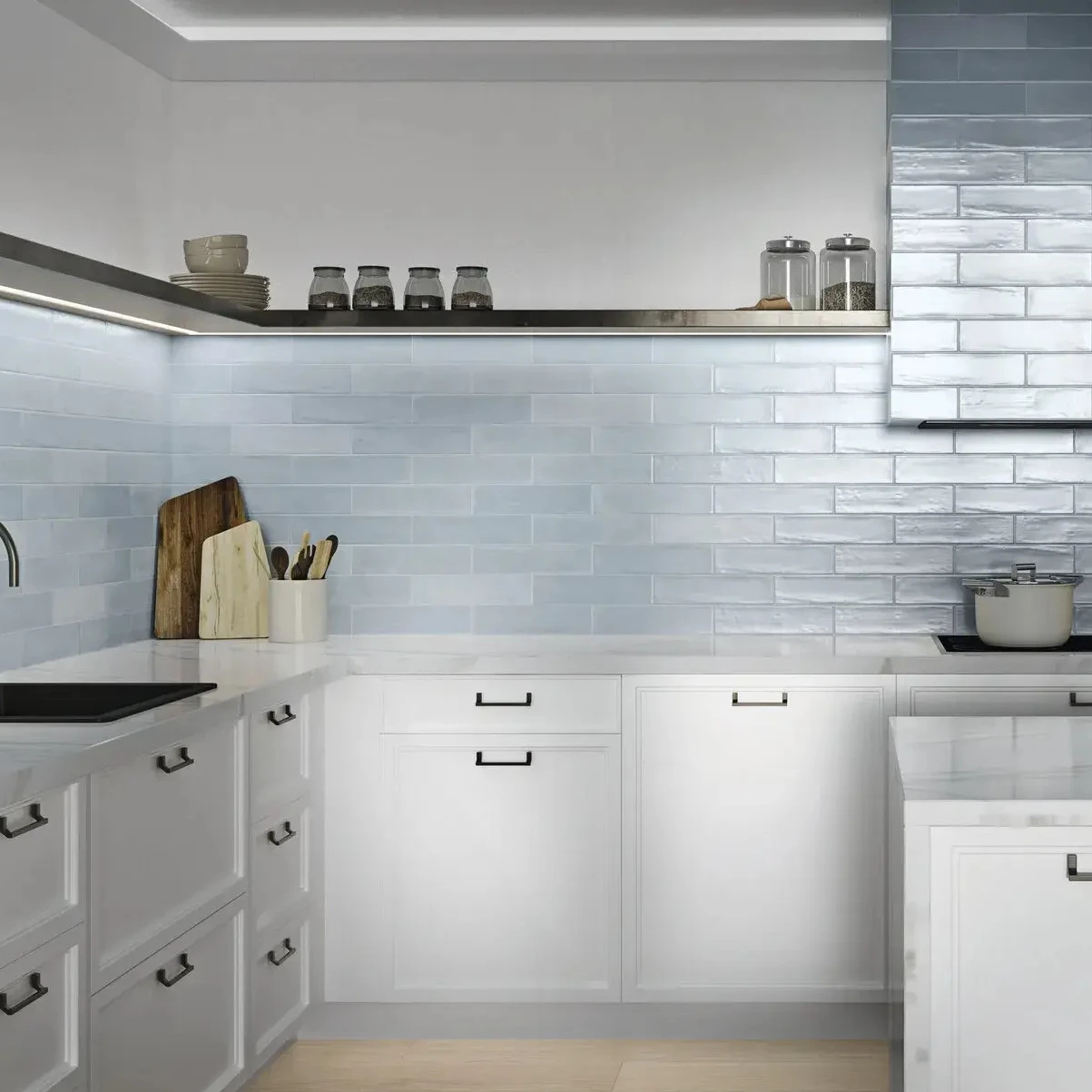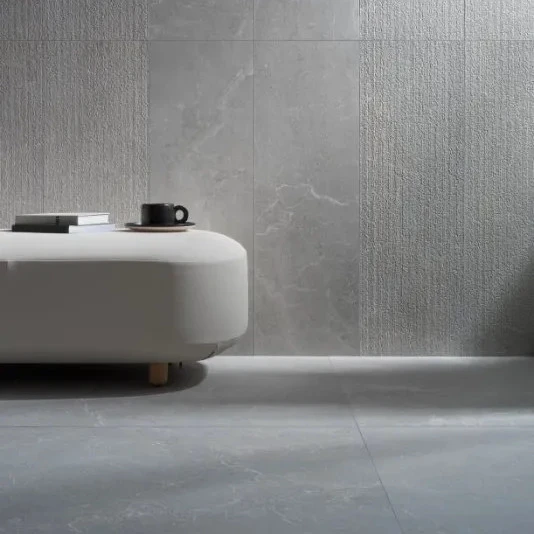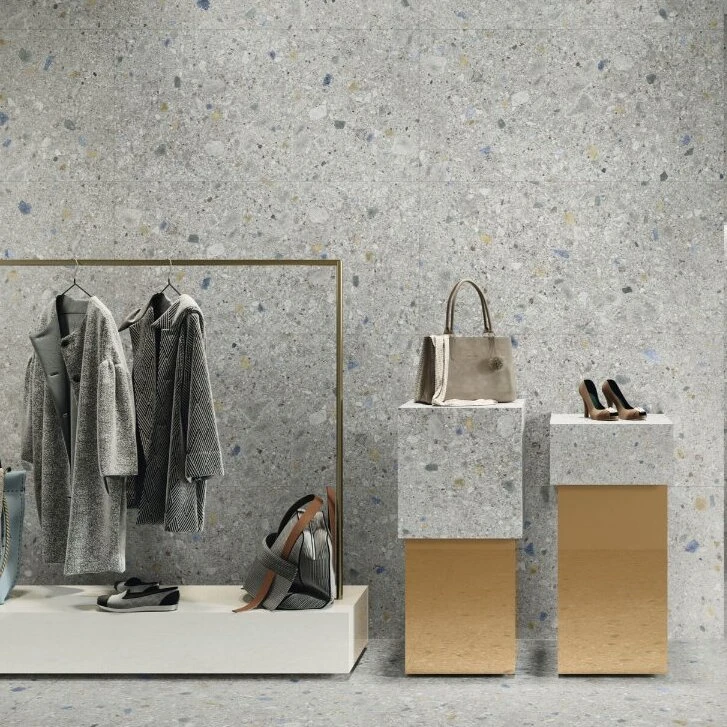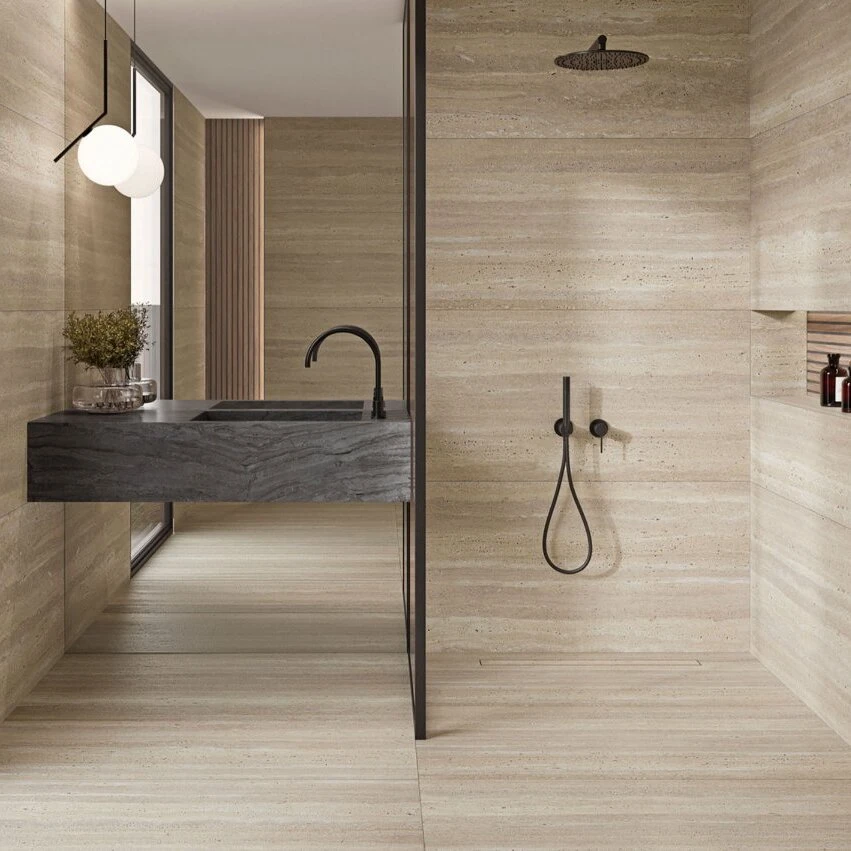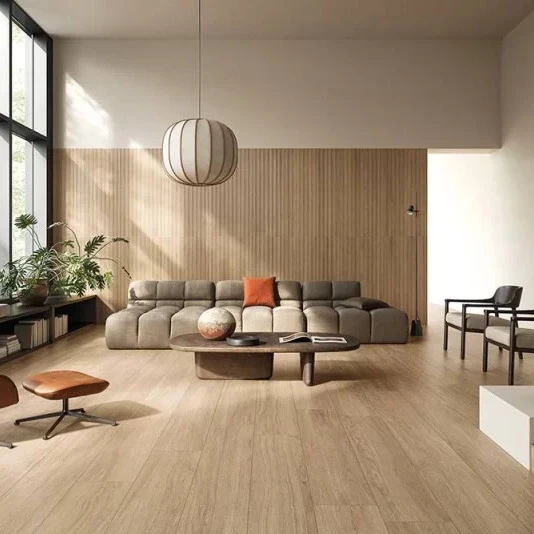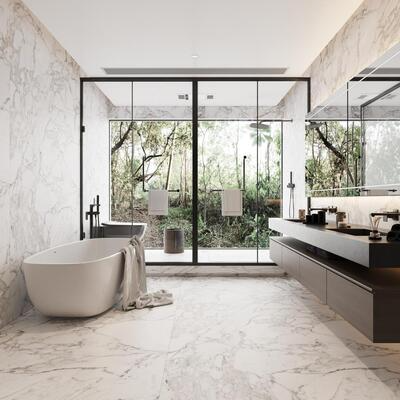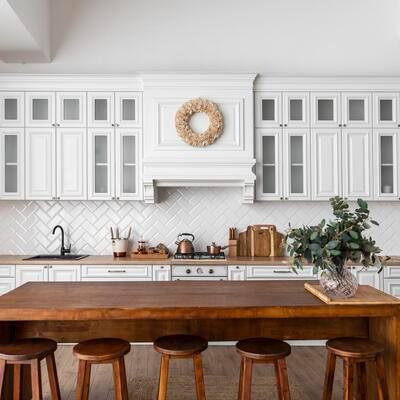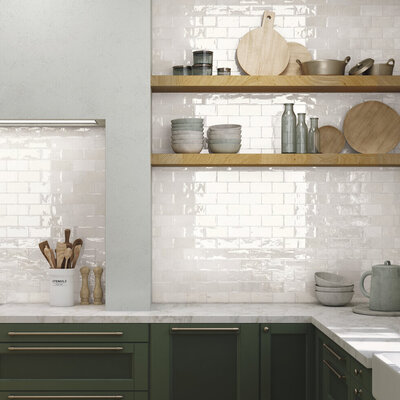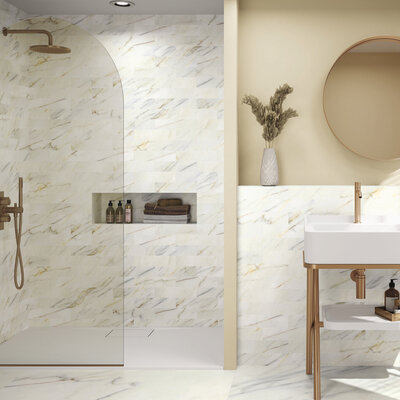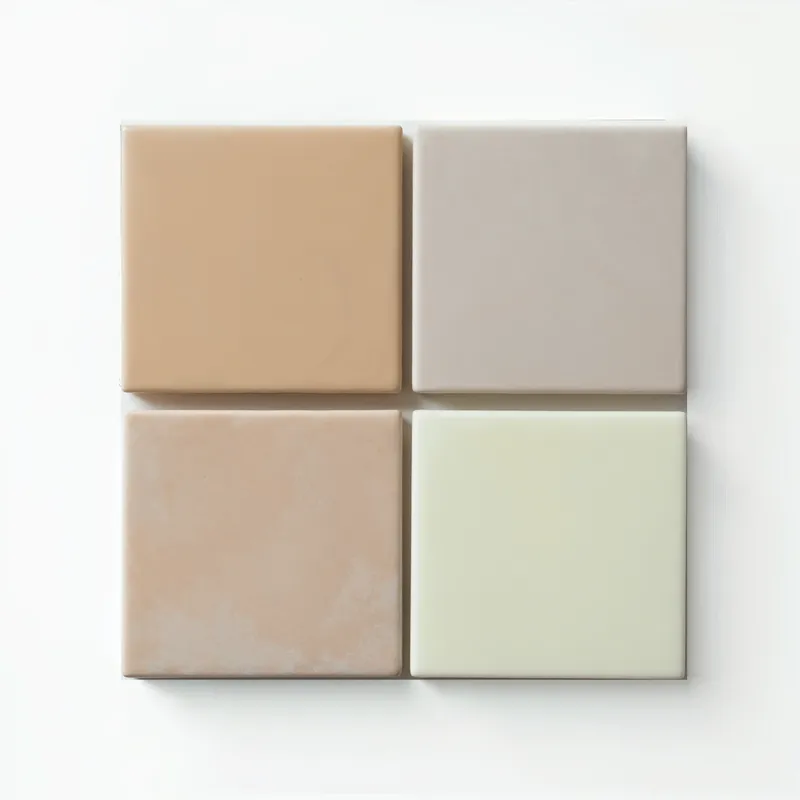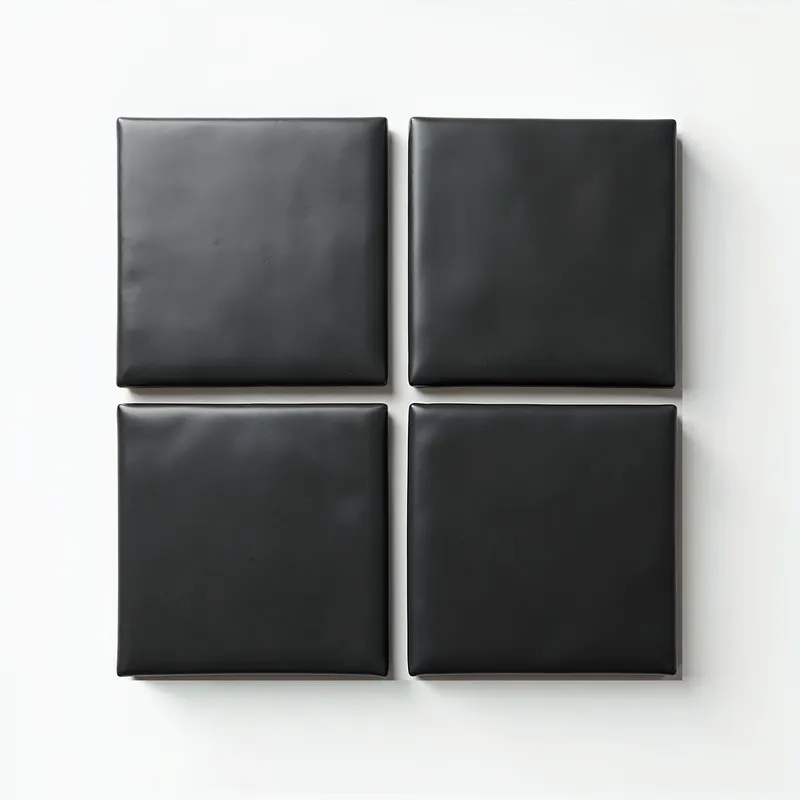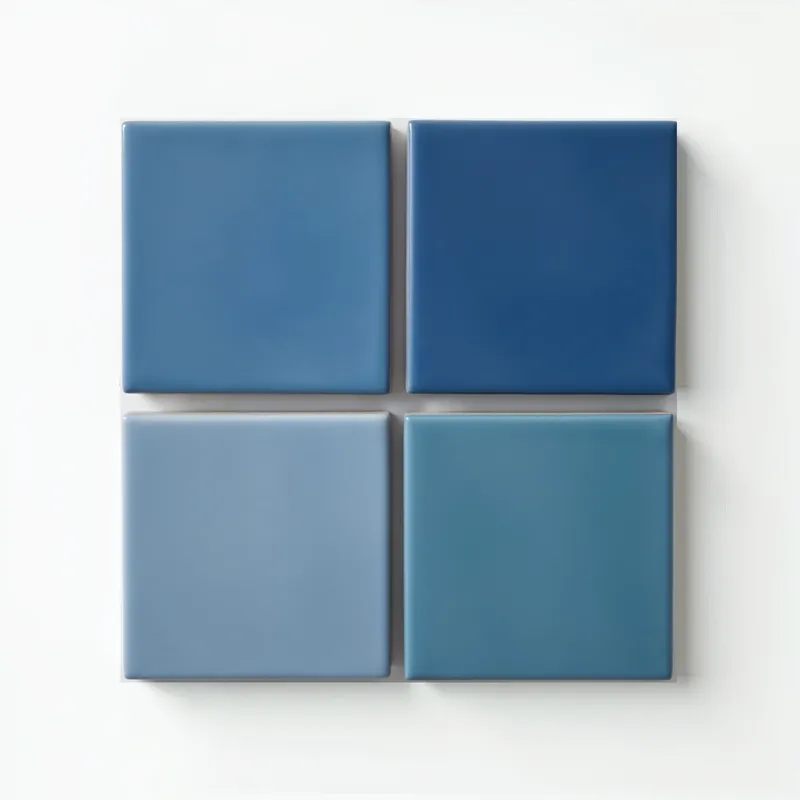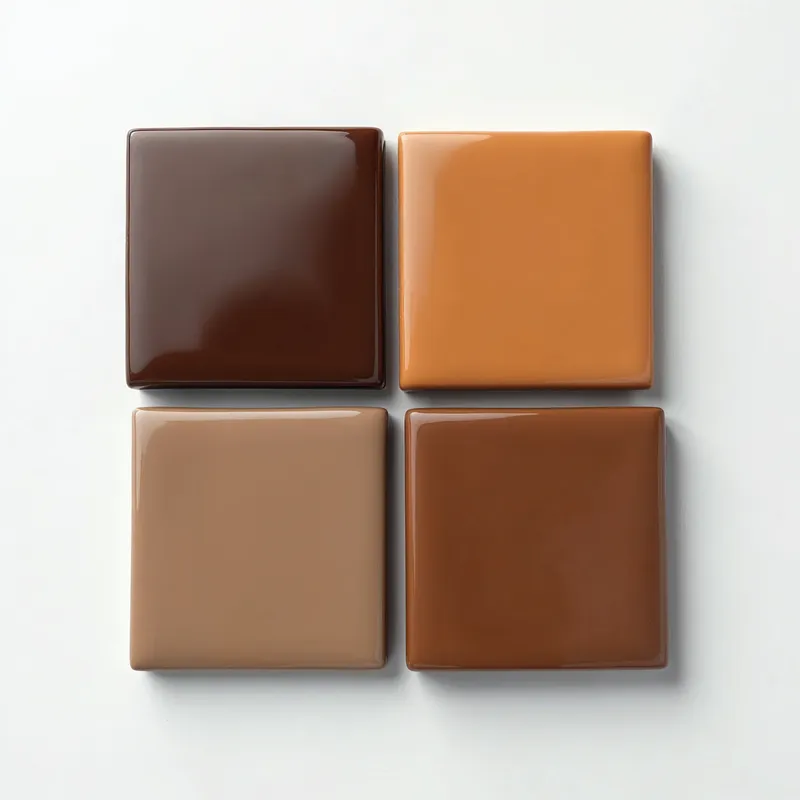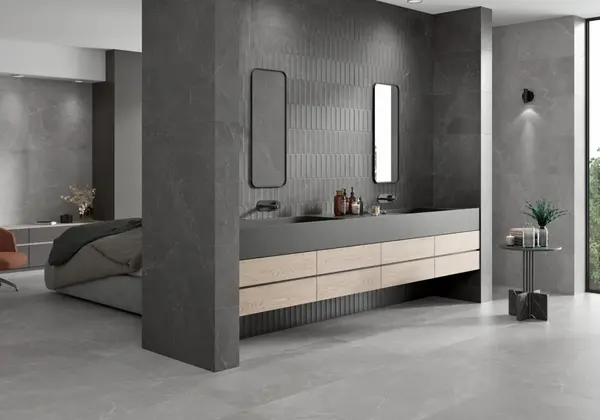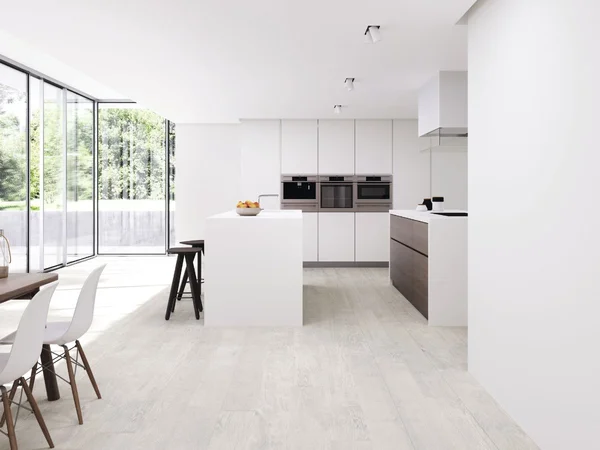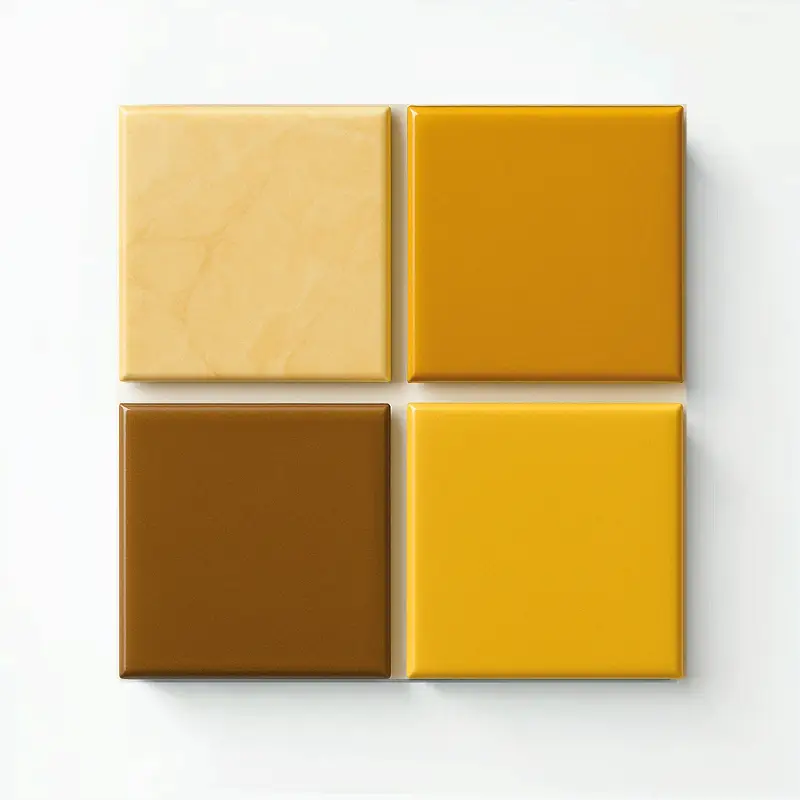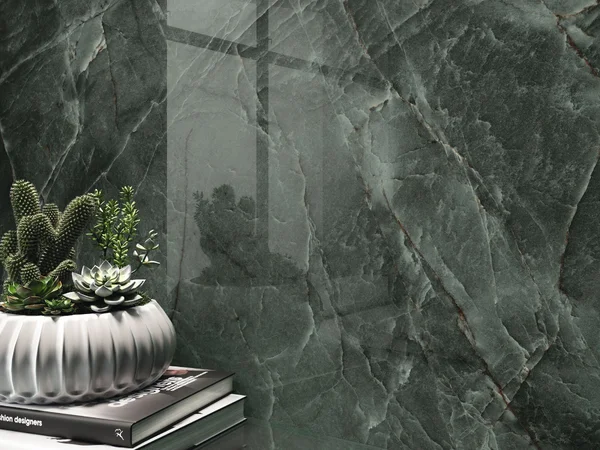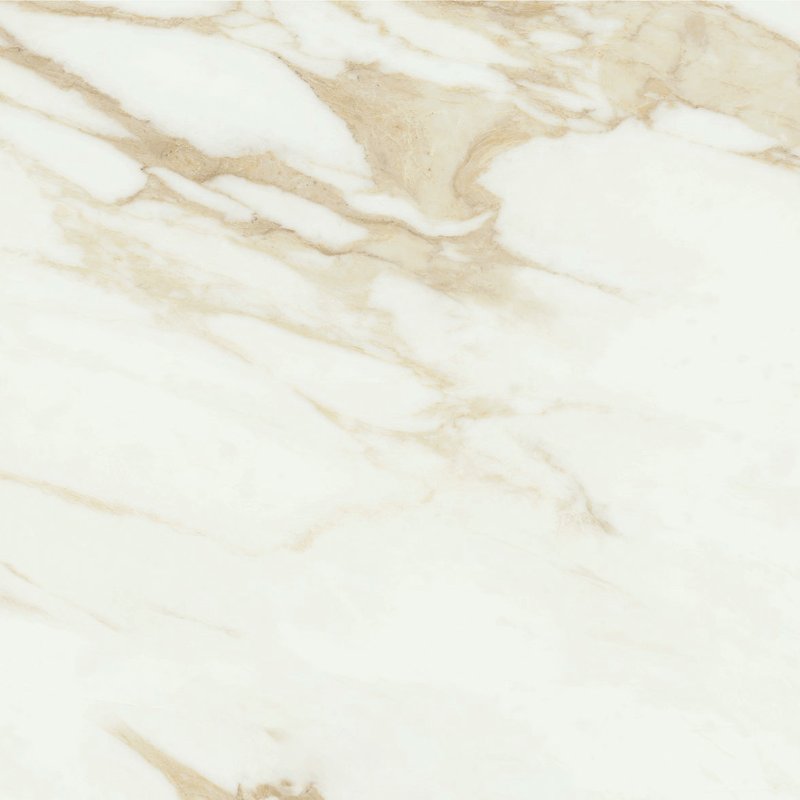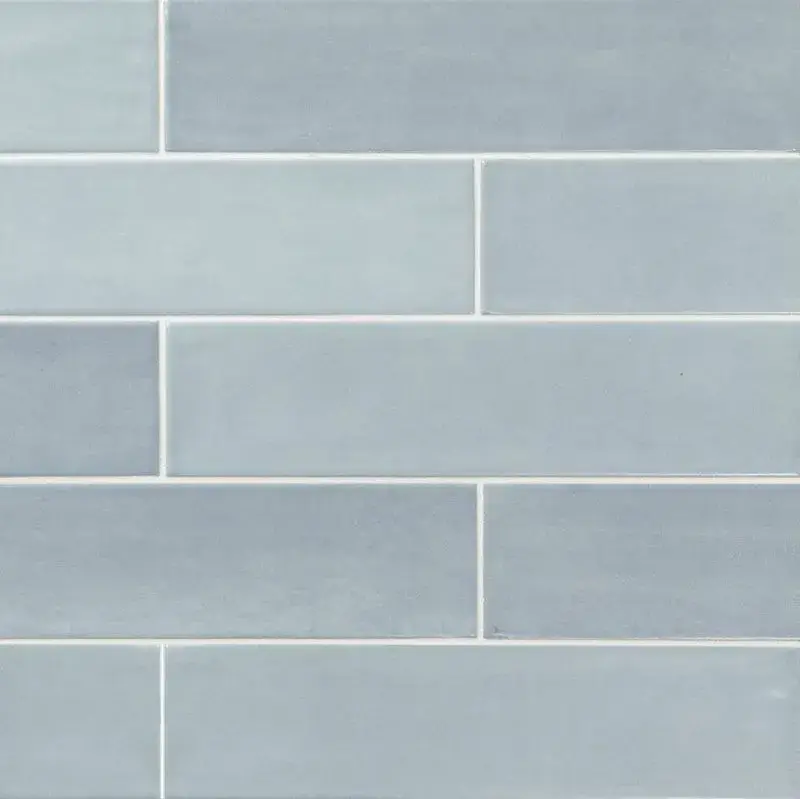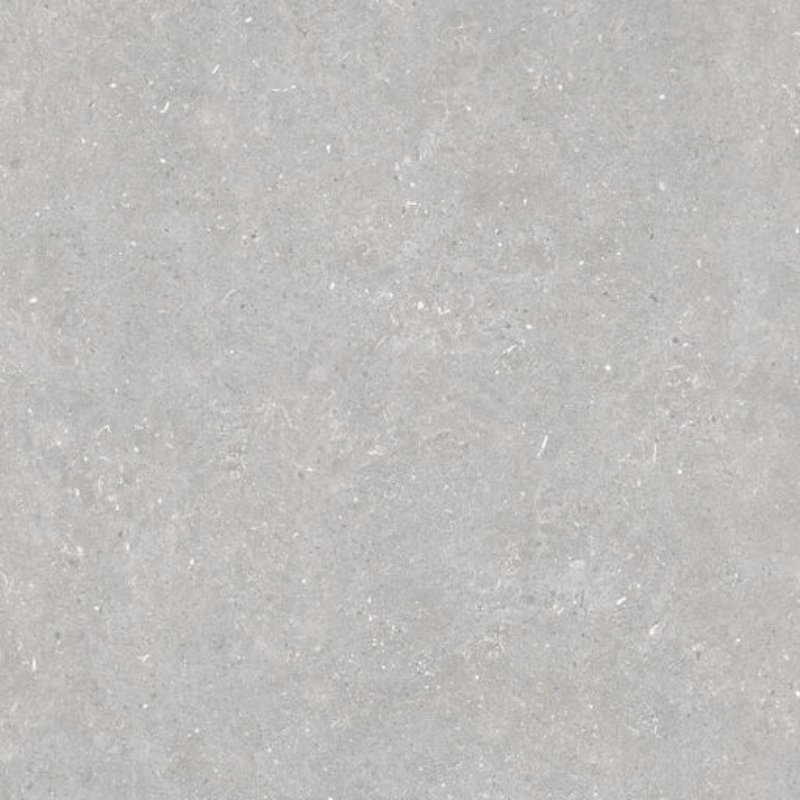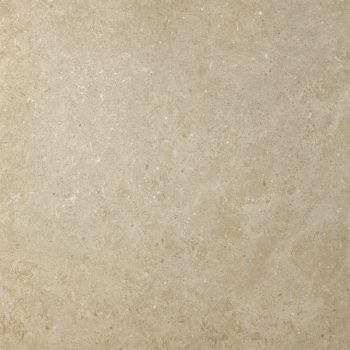Choosing the right tile is only half the story—the way it’s laid makes just as big of an impact. Whether you’re going for sleek and modern or timeless and classic, the pattern you choose can completely transform your space. This guide explores the most popular tile patterns, where to use them, and how to make the right choice for your room and style.
Tile Pattern Types
Straight Lay (Grid Pattern)
The straight lay pattern is the most classic and straightforward of them all. Tiles are aligned in straight rows and columns, creating a clean, uniform grid. This layout highlights the tile itself—making it ideal for showcasing bold colors, high-gloss finishes, or standout textures. It works beautifully in modern bathrooms, kitchens, or commercial spaces where simplicity is key.
Diagonal (Diamond Pattern)
By turning square tiles 45 degrees, the diagonal pattern creates a diamond-like layout that instantly makes spaces feel larger. This technique adds movement and elegance, especially in smaller rooms like powder rooms or entryways. It’s a subtle twist on the straight lay, offering more dimension without being overwhelming.
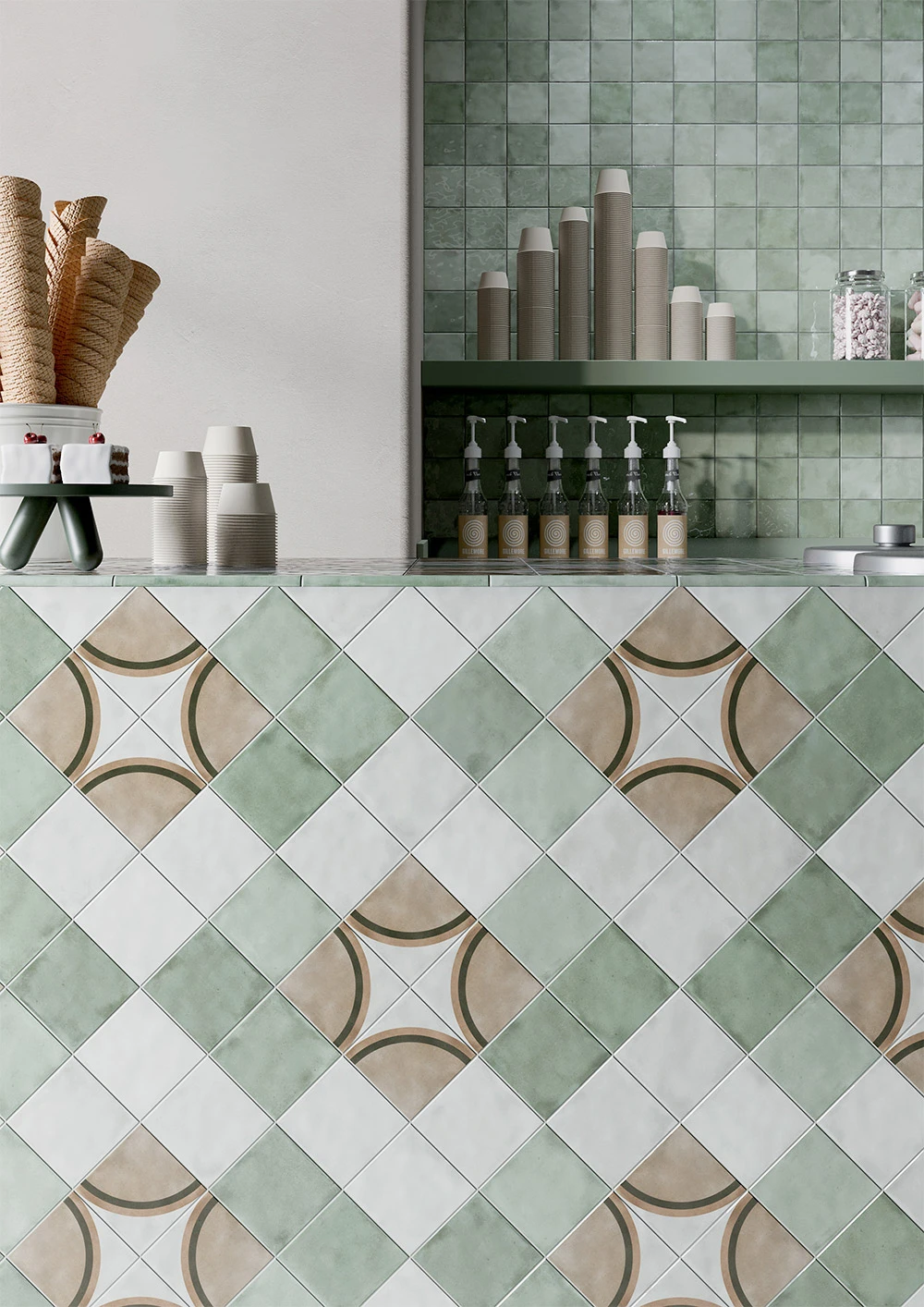 Featured: Small Sage Glossy 4×4
Featured: Small Sage Glossy 4×4
Brick Bond (Running Bond / Subway Pattern)
Mimicking the look of traditional brick walls, this pattern staggers each row of tiles by half the tile’s length. It’s especially popular with rectangular subway tiles and can add timeless charm to any wall or floor. Brick bond works well in both modern and vintage-inspired settings, offering subtle visual texture.
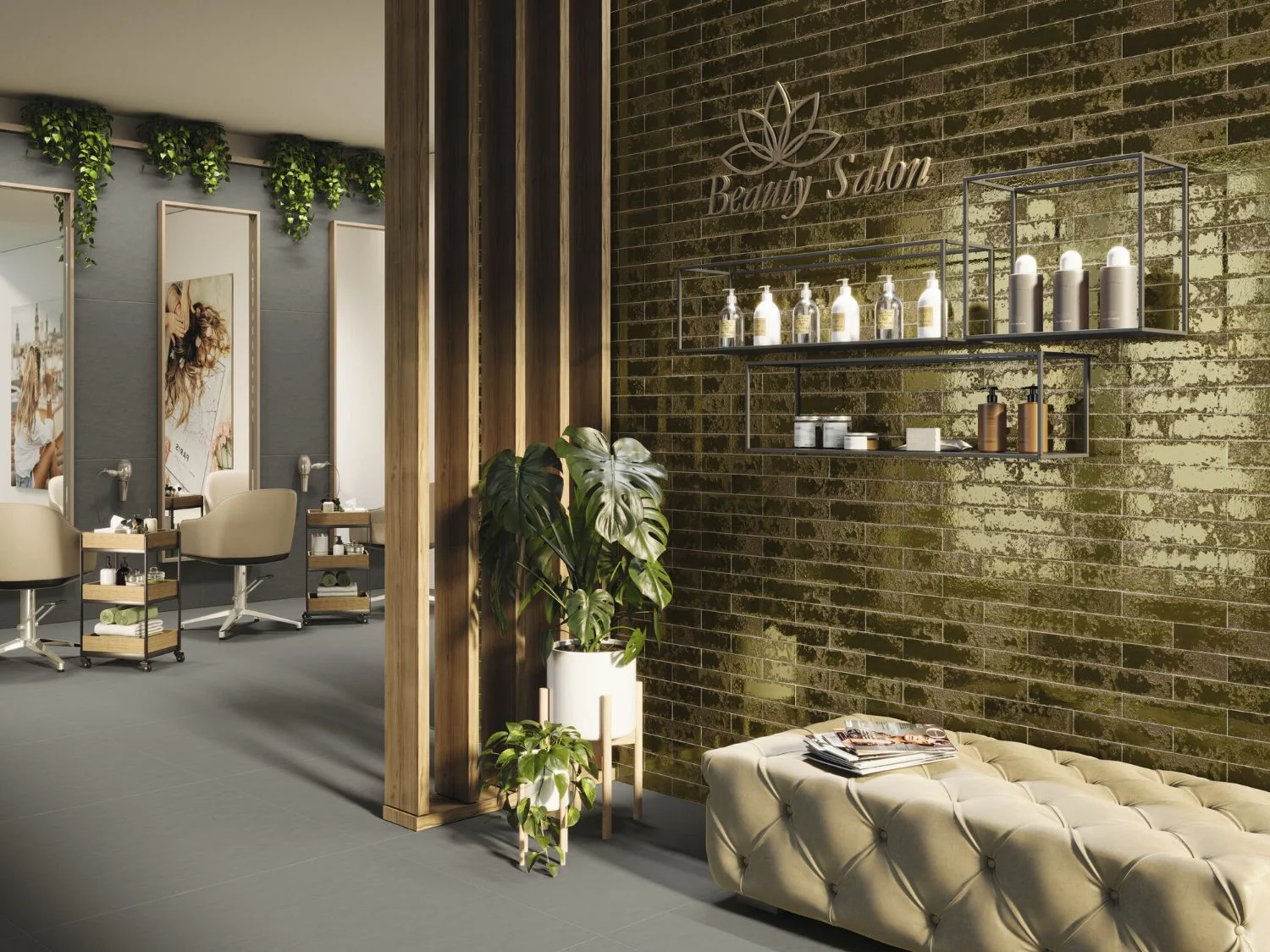 Featured: Pukka Army Green Glossy 2.5×10
Featured: Pukka Army Green Glossy 2.5×10
Herringbone
Herringbone patterns are created by laying rectangular tiles at a 45° or 90° angle in a V-shaped zigzag. This classic European design adds dynamic movement and is perfect for creating a feature floor, a bold backsplash, or a stylish accent wall. It pairs well with wood-look tiles, marble, and even high-gloss ceramic for a dramatic finish.
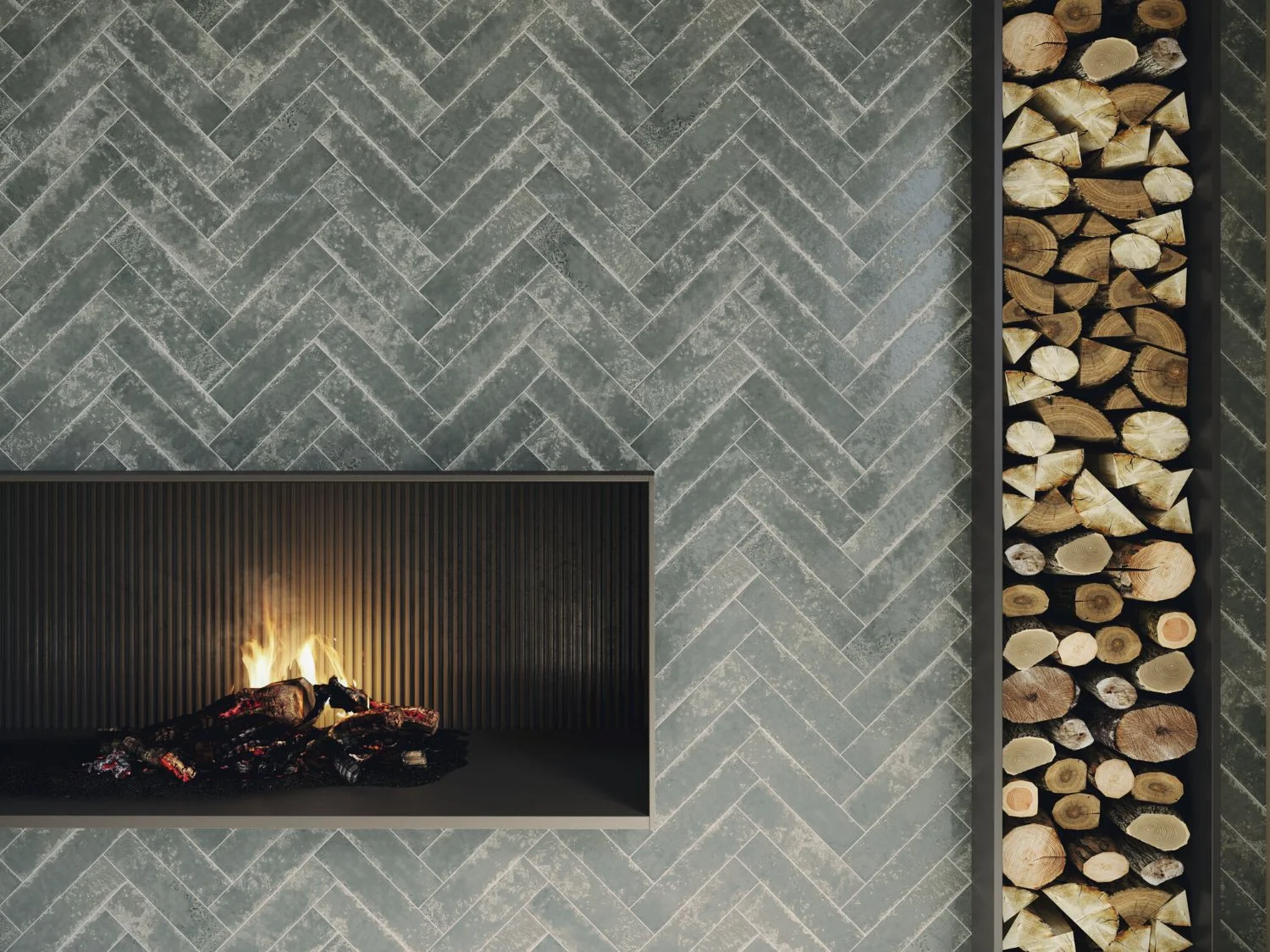 Featured: Pukka Steel Blue Glossy 2.5×10
Featured: Pukka Steel Blue Glossy 2.5×10
Chevron
Similar to herringbone but with tiles cut at precise angles to meet in a sharp “V”, the chevron pattern is bold and directional. It creates a seamless flow that draws the eye and adds a touch of sophistication. Use it in narrow hallways, kitchen backsplashes, or to elongate the feel of a room.
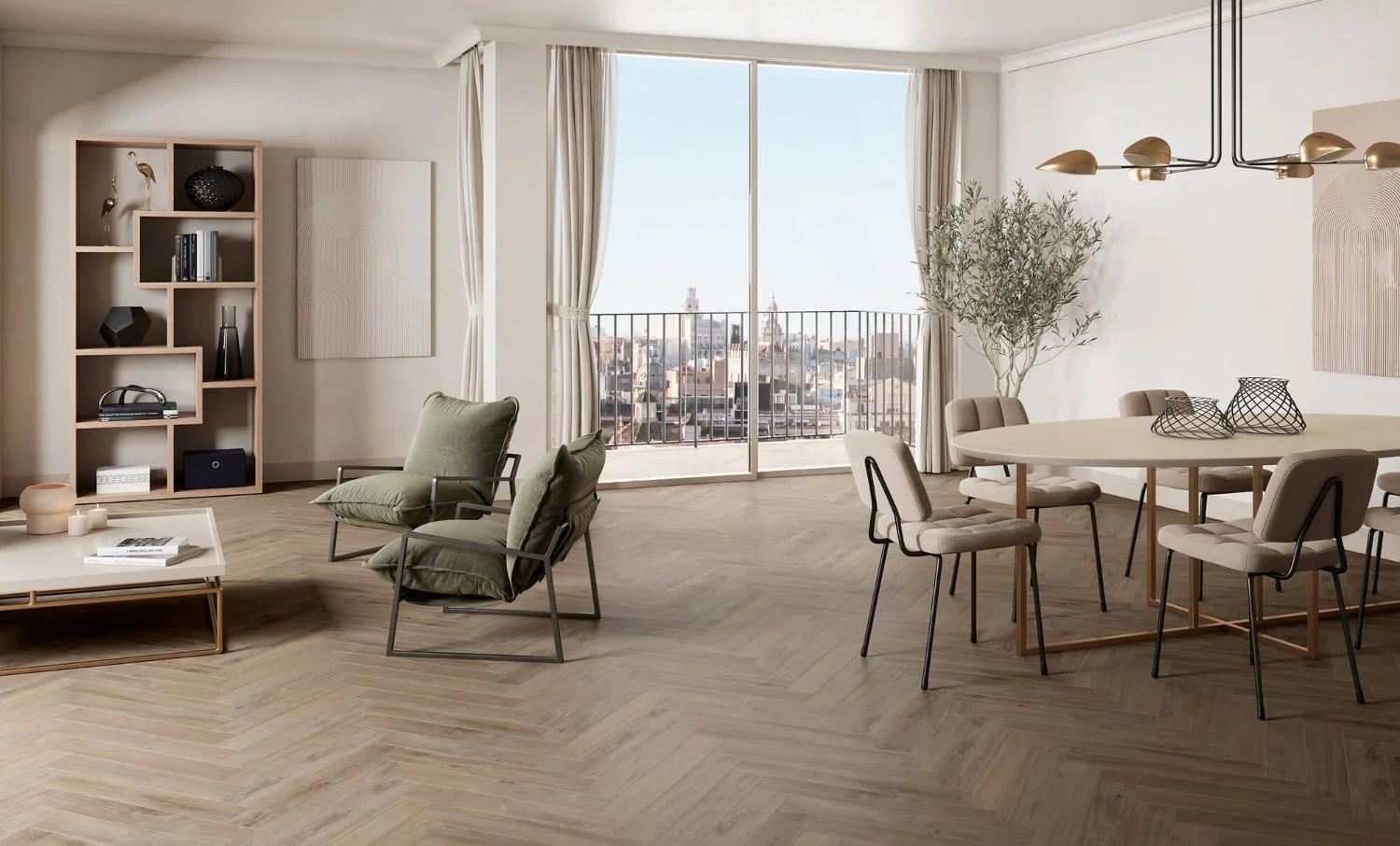 Featured: Michigan Chevron Bone Matte 24×48
Featured: Michigan Chevron Bone Matte 24×48
Hexagon
The hexagon pattern is a timeless yet trendy choice that brings both geometry and charm into any space. Whether in classic small-scale mosaics or oversized modern formats, hexagon tiles create a honeycomb effect that feels fresh and dynamic. Their six-sided shape naturally adds movement and interest, making them perfect for floors, backsplashes, and even full shower walls. You can keep it monochromatic for a minimalist look or mix contrasting colors for a bold, artistic statement. Hexagon tiles work beautifully in both contemporary and vintage-inspired interiors, offering a unique blend of form and function.
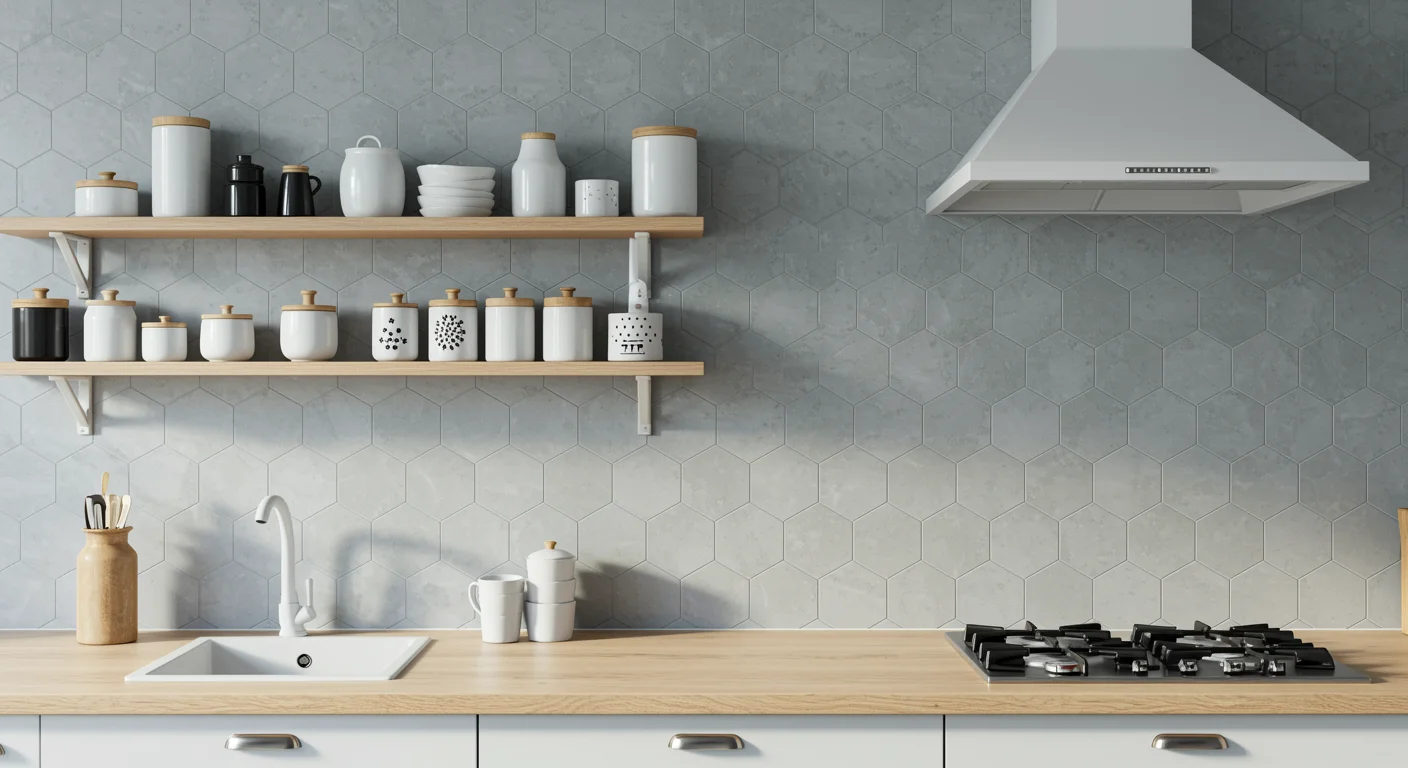 Credit: Pinterest
Credit: Pinterest
Basketweave
This traditional pattern resembles woven fabric and is often made with square tiles and smaller rectangular “weave” inserts. Basketweave layouts add a sense of craftsmanship and detail, making them ideal for classic bathrooms and entryways. It works beautifully with marble or mosaic tiles.
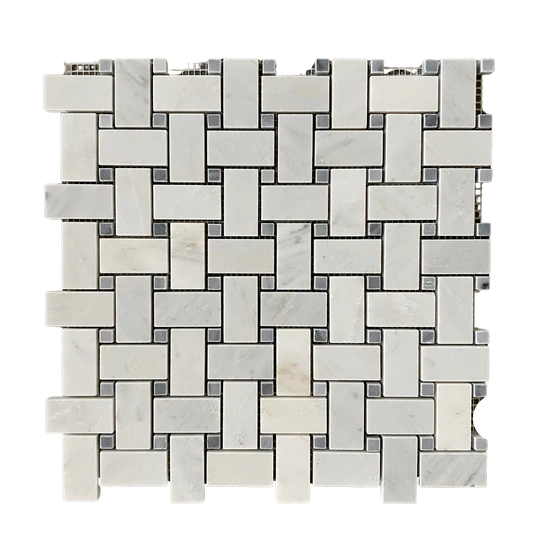
Versailles (French Pattern)
The Versailles or French pattern uses four different tile sizes in a specific, repeating layout. It has an old-world European feel and adds natural movement to outdoor patios, living rooms, or poolside areas. It pairs especially well with travertine, limestone, or tumbled stone finishes.
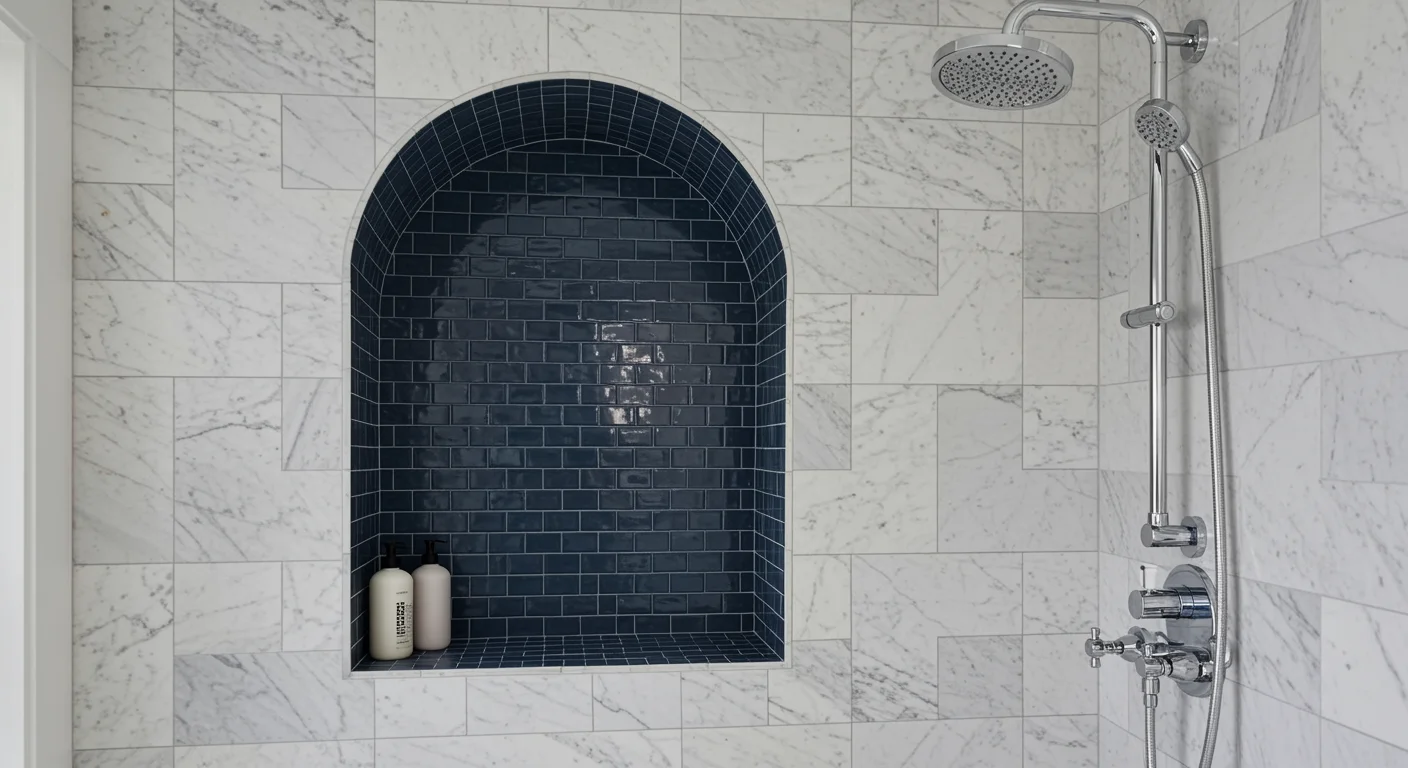
Stacked Vertical
A modern twist on the straight lay, stacked vertical tiles are aligned in upright columns rather than rows. This layout emphasizes height, making it great for accent walls, small bathrooms, or behind vanities. It has a sleek, structured feel that pairs well with minimalistic or contemporary spaces.
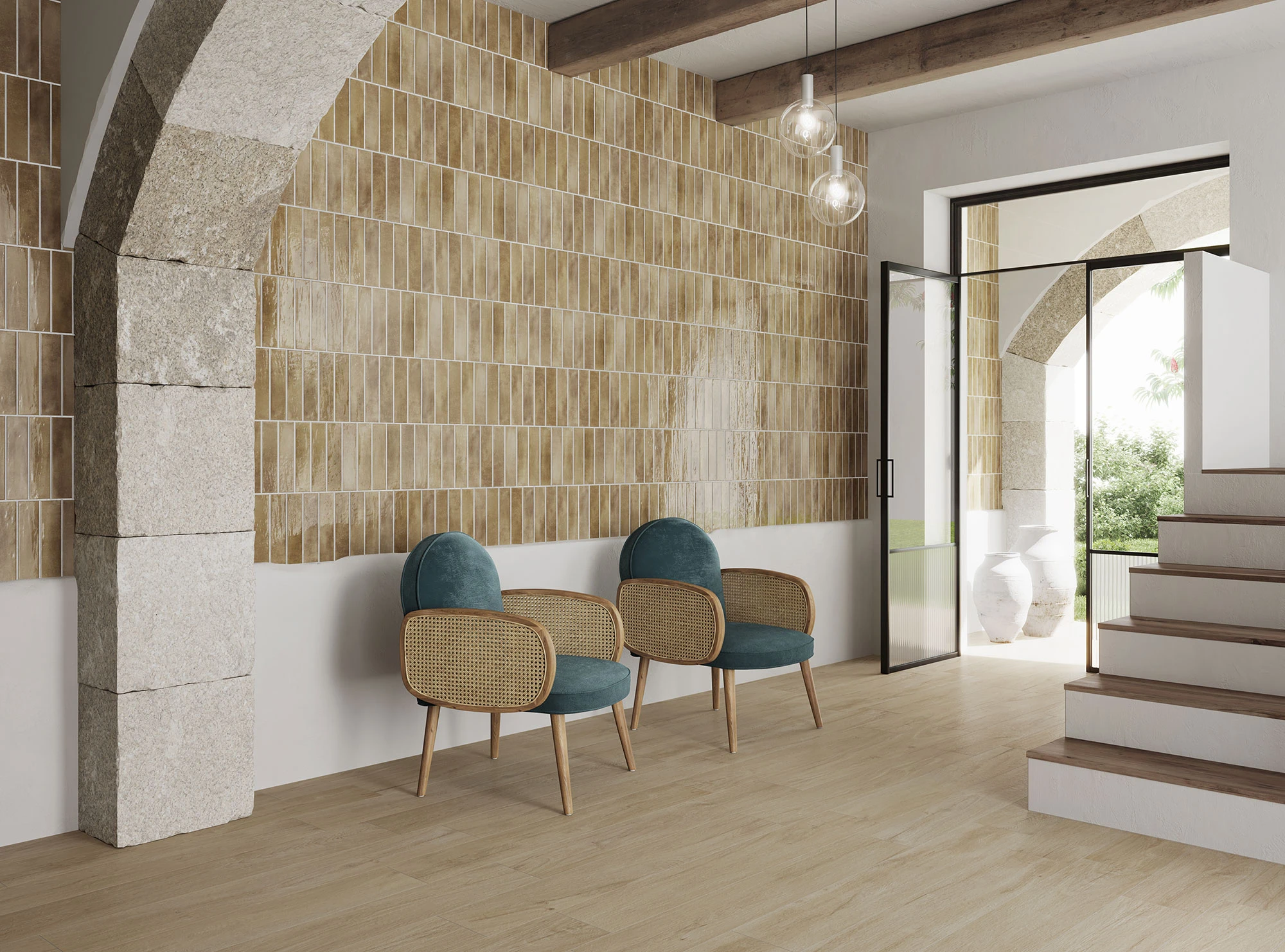 Featured: Imagine Cotto Glossy 2.5×10
Featured: Imagine Cotto Glossy 2.5×10Pinwheel (Hopscotch)
The pinwheel layout places a small square tile at the center of four larger square tiles, repeating like a hopscotch board. It creates a subtle, rhythmic pattern that can break up large floor areas. It works well with ceramic, stone, or porcelain tiles in both modern and traditional homes.
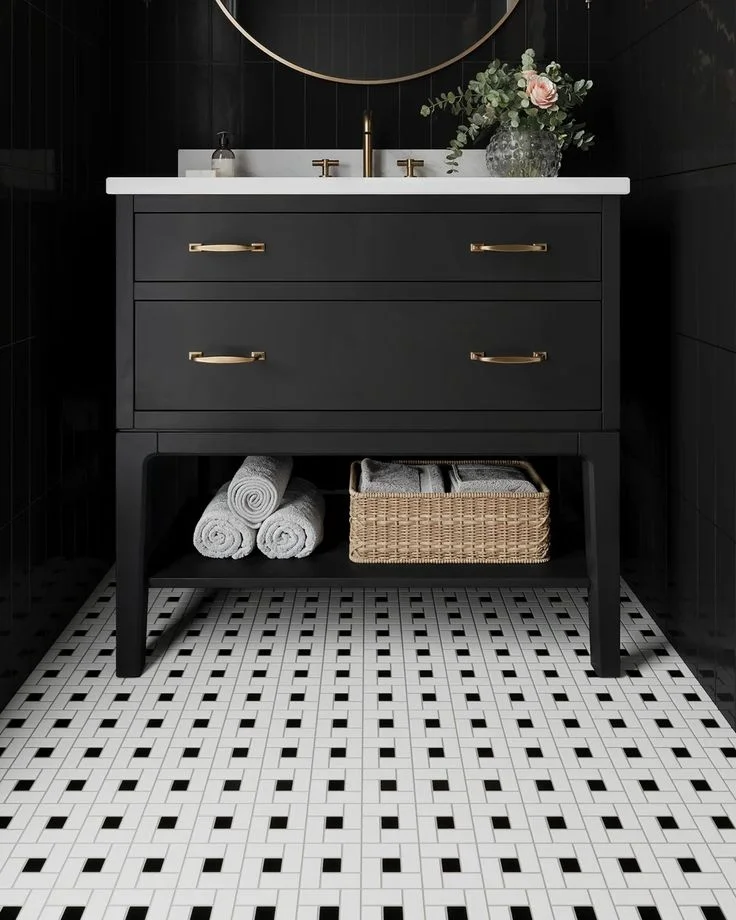 Credit: Pinterest
Credit: PinterestPopular Pattern Combinations
Herringbone + Subway Pattern
-
Where it works: Herringbone floor with subway pattern shower or backsplash
-
Why it works: The angled movement of herringbone draws the eye, while the subway pattern above keeps the look grounded and calm.
-
Style vibe: Modern farmhouse, elevated transitional, or upscale spa bathrooms
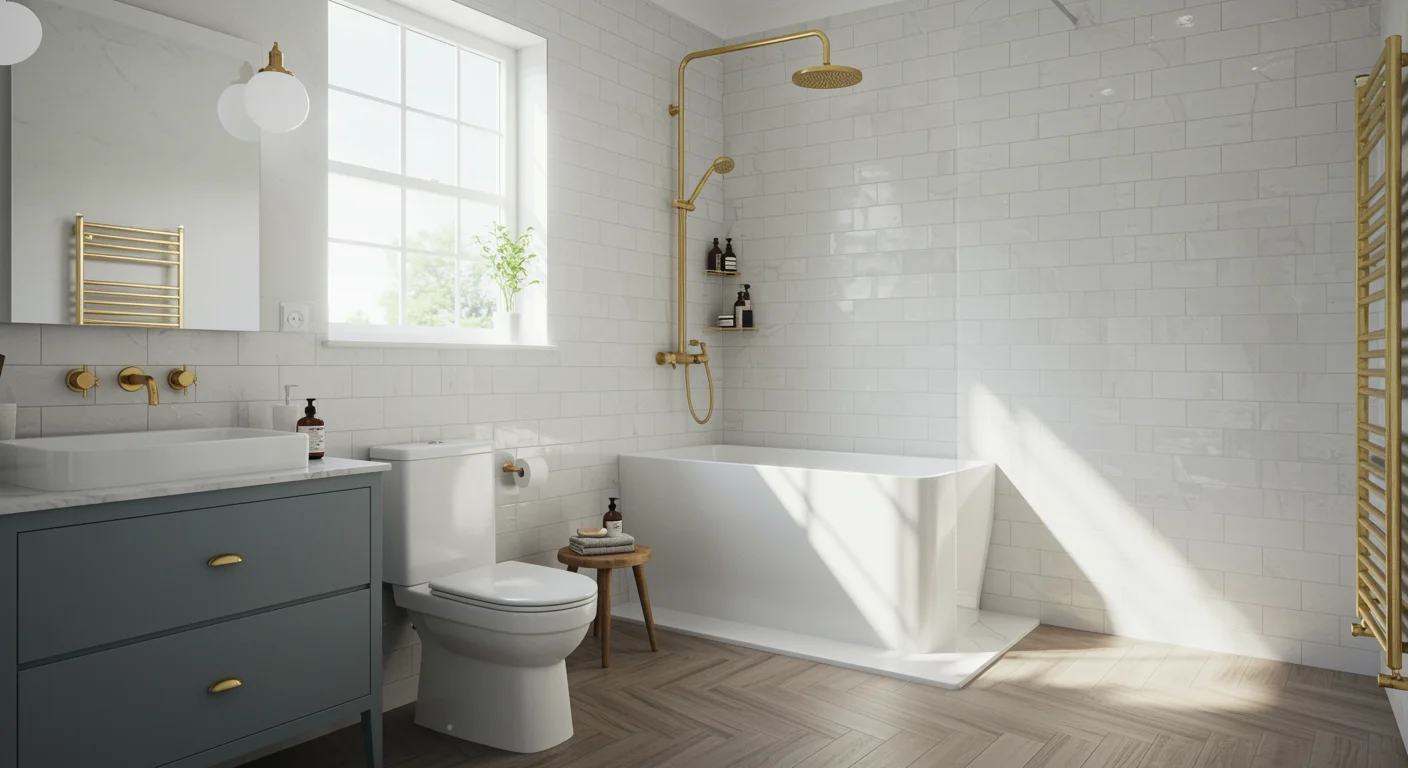
Mosaic Niche + Subway Walls
-
Where it works: Shower niche or backsplash inset paired with classic 3×6 or 4×12 subway tile
-
Why it works: Small-format tiles contrast beautifully with elongated rectangles, making the niche pop as a focal point.
-
Style vibe: Clean, classic, with just enough personality

Hex Floor + Vertical Stack Walls
-
Where it works: Powder rooms or modern showers
-
Why it works: Geometric hex floor tiles bring bold character, while the vertical stacked wall tiles visually elongate the space.
-
Style vibe: Scandinavian, contemporary, or retro-modern
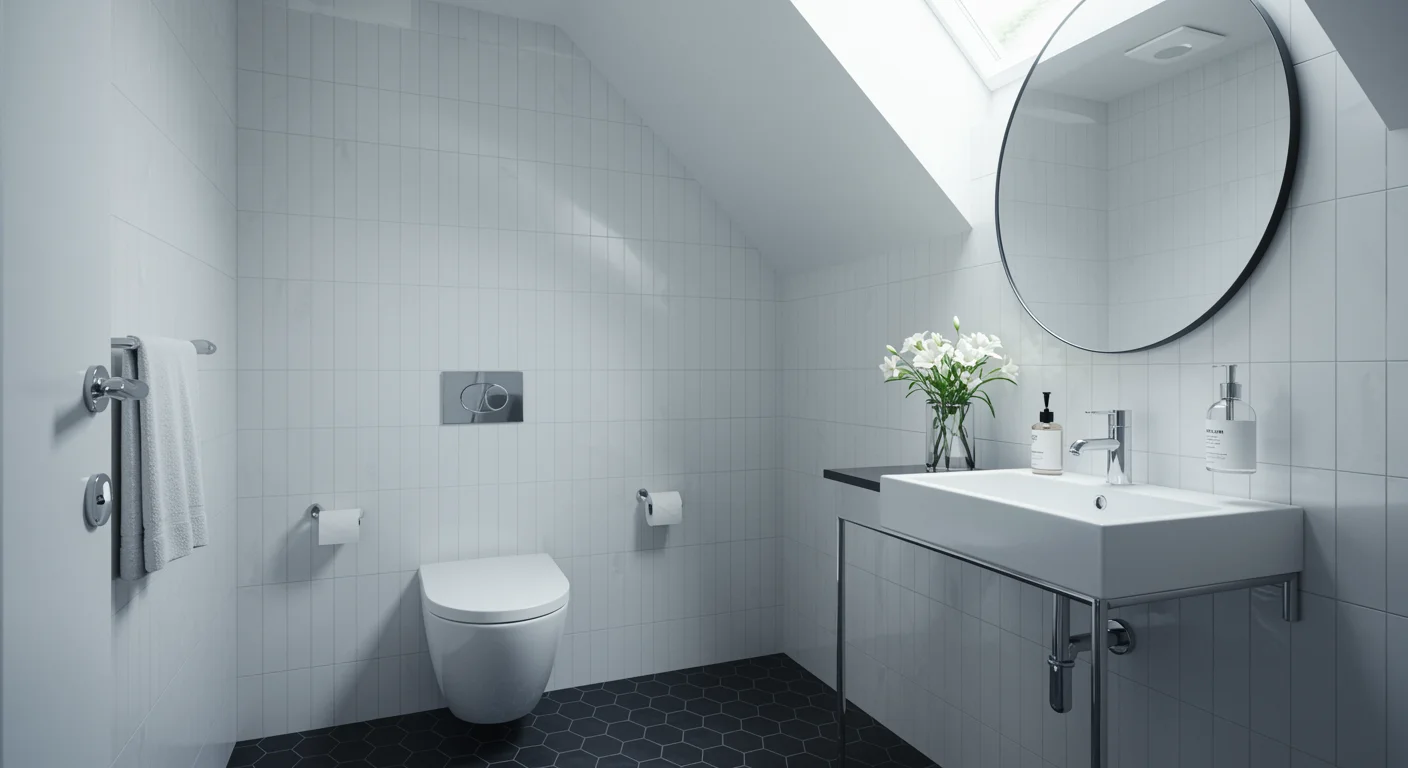
Large Format Grid + Chevron Feature Wall
-
Where it works: Open bathrooms or wet rooms
-
Why it works: Large tiles in a grid keep the overall feel calm and expansive, while a chevron wall (behind a tub or vanity) adds movement and contrast.
-
Style vibe: Luxe, modern, spa-inspired
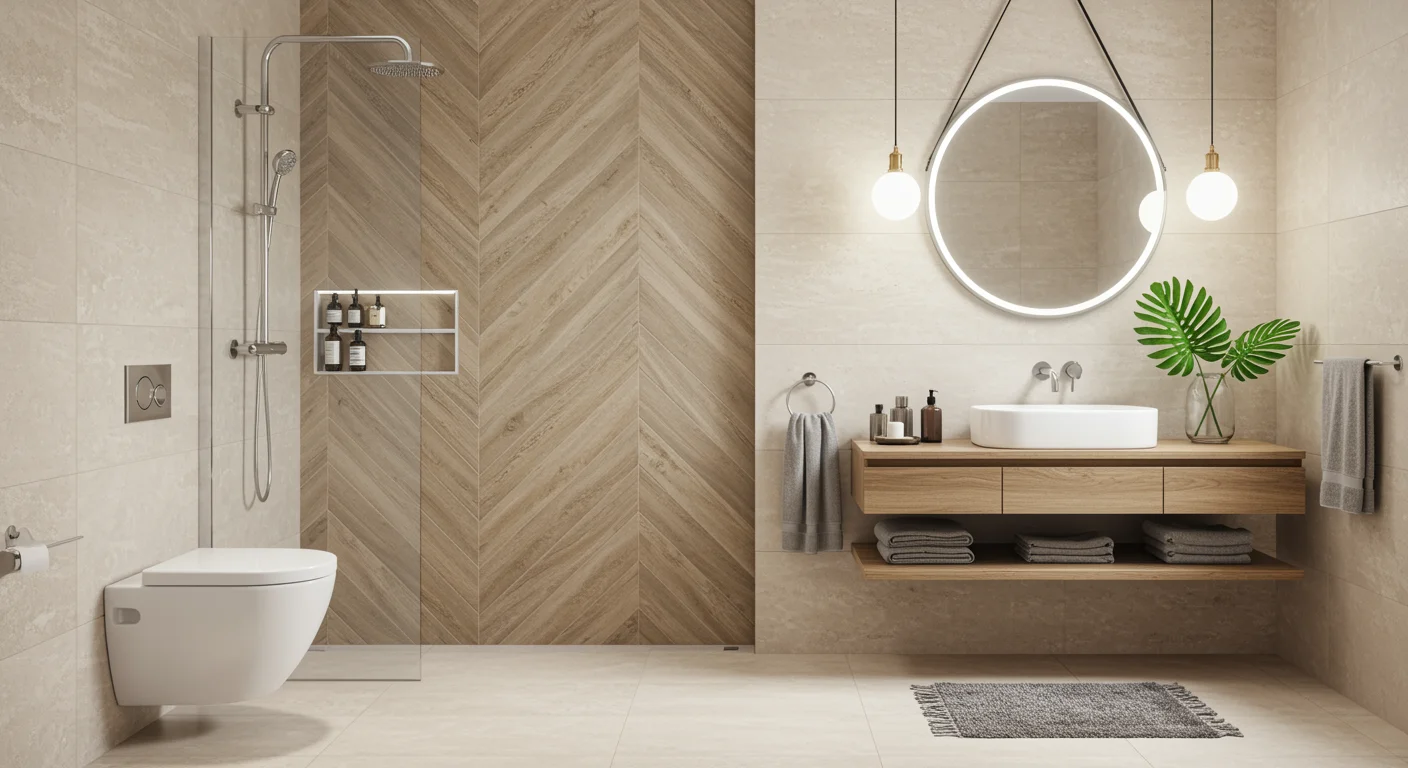
Choosing the Right Pattern
When selecting a tile pattern, consider the following:
-
Room Size: Diagonal and herringbone patterns can make small rooms appear larger.
-
Style: Traditional patterns like basket weave suit classic interiors, while stacked or grid patterns complement modern designs.
-
Tile Size and Shape: Ensure the pattern works well with the tile dimensions.
-
Color and Texture: Contrasting grout can highlight patterns, while matching grout offers a seamless look.
Final Thoughts
Tile patterns are more than just layout choices — they shape the way your space feels, flows, and functions. Whether you’re going for timeless charm with a running bond or making a bold statement with chevron or herringbone, the right pattern enhances both the tile itself and the room around it.
By thinking beyond color and finish and considering how your tile is laid, you open the door to a world of visual impact. Don’t rush the decision — explore samples, sketch layouts, and let your space speak for itself.
Shop Tile at Tile Decor
At Tile Decor, we carry a wide selection of tiles perfect for every pattern and layout imaginable — from classic subway and marble looks to geometric, wood-look, and mosaic designs. Whether you’re planning a small backsplash or a full floor installation, we’ve got the tile (and the layout inspiration) to match.
We offer cutting service for every shape and for every tile we carry
-
Explore trending layouts like herringbone, basket weave, and Versailles
-
Order tile samples to test layout options in your space
-
Get style advice from our design experts — online or in-store
Common FAQs
Which tile pattern makes a small room look bigger?
Diagonal and herringbone patterns can visually expand a space by drawing the eye outward, making the room feel more open.
Do tile patterns affect installation costs?
Yes — intricate patterns like chevron, Versailles, or windmill typically require more cuts and precision, increasing labor time and cost.
Can I mix tile patterns in one room?
Definitely! Just keep the palette cohesive. For example, you could use a stacked pattern on the wall and herringbone on the floor for contrast.
What’s the easiest tile pattern to install?
The straight lay or stacked pattern is the simplest, making it a great choice for DIYers or budget-conscious projects.
Should grout lines match or contrast with the tile pattern?
Matching grout creates a seamless look, while contrasting grout can highlight the pattern and add drama.







